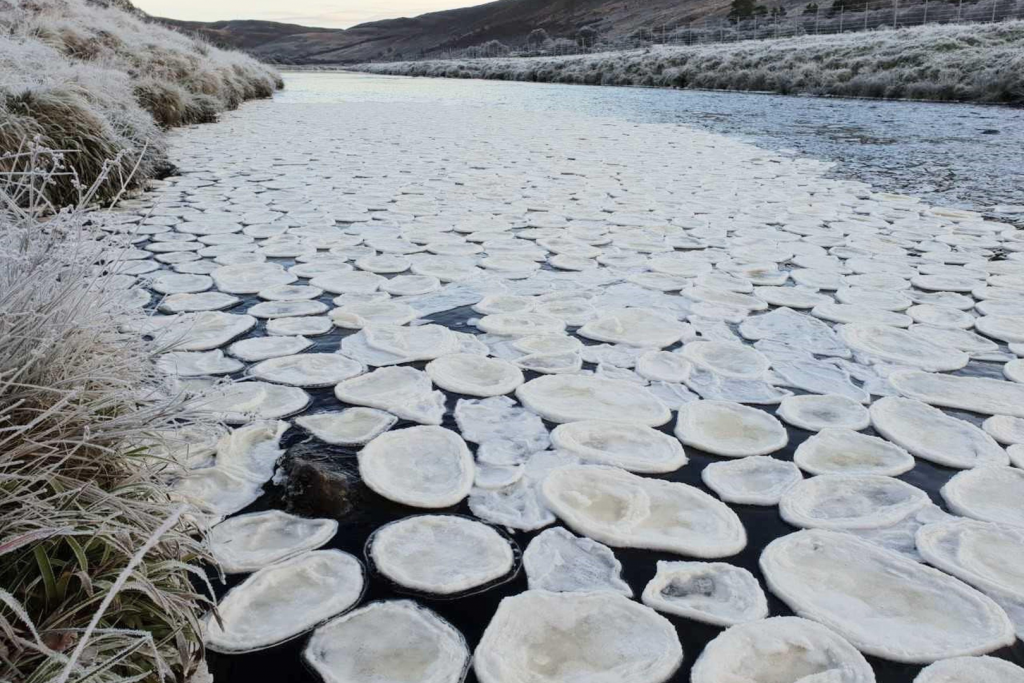After a sharp decrease in temperatures across the UK this month, strange “ice pancakes” emerged on the River Bladnock in Scotland, like a cluster of frozen cowpats.
During the current cold wave in the United Kingdom, most of the country saw temperatures below freezing, with December 12 being the coldest day in the country since 2010. The lowest temperature ever recorded was -17.3 degrees Celsius (0.8 degrees Fahrenheit) in Braemar, Scotland.
The odd occurrence is considered to have been produced by a rapid drop in temperature, and reports of similar sightings on a river in Glasgow and in the Lake District, Northwest England, suggest the formations could be occurring elsewhere in the UK.
This odd phenomenon is rarely seen in the UK, with each disc extending between 20 and 200 cm (8-79 inches). Ice pancakes normally occur in the Baltic Sea and surrounding Antarctica, but they can also be observed floating on the Great Lakes in the US and Canada.
The discs might arise due to two quite diverse sets of conditions. First, they can be formed by waves generating ice fragments that bang against one other in turbulent waters, forming circular edges and gradually increasing. Lapping waters join the rim of the already frozen disc and freeze to form an additional ring layer, forming the boundaries around the border of the ice pancake.

In calmer river settings, however, they occur as foam on the river’s surface begins to freeze. The frozen masses start to assemble and become entangled in a whirling motion known as an eddy, forcing them to create these circular forms. They continue to develop as smaller pieces of ice collide with the discs and freeze to the rim.

Ice pancakes are frequently mushy and brittle despite their appearance as solid, frozen discs. However, when the conditions are right, the discs will begin to consolidate, forming sheet ice, which can bend to produce ice ridges when the water is wavy.


